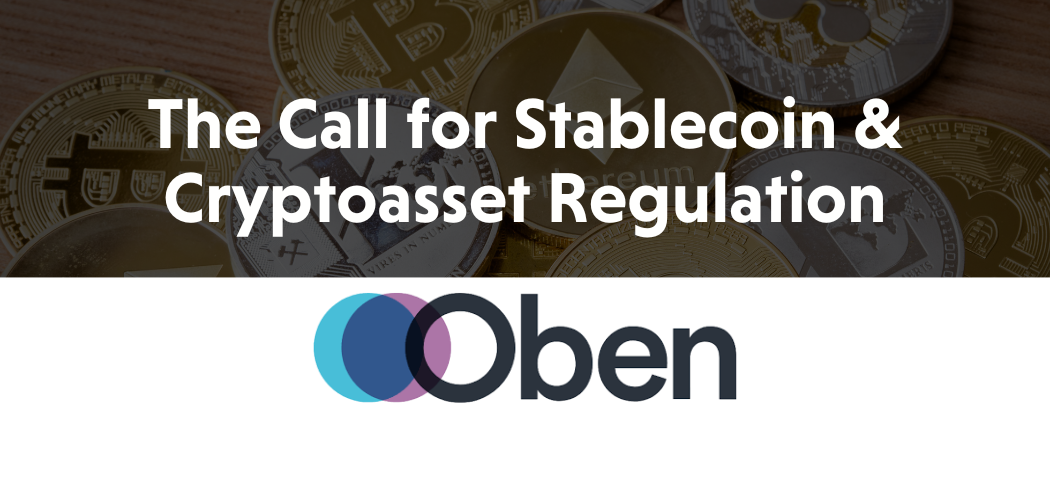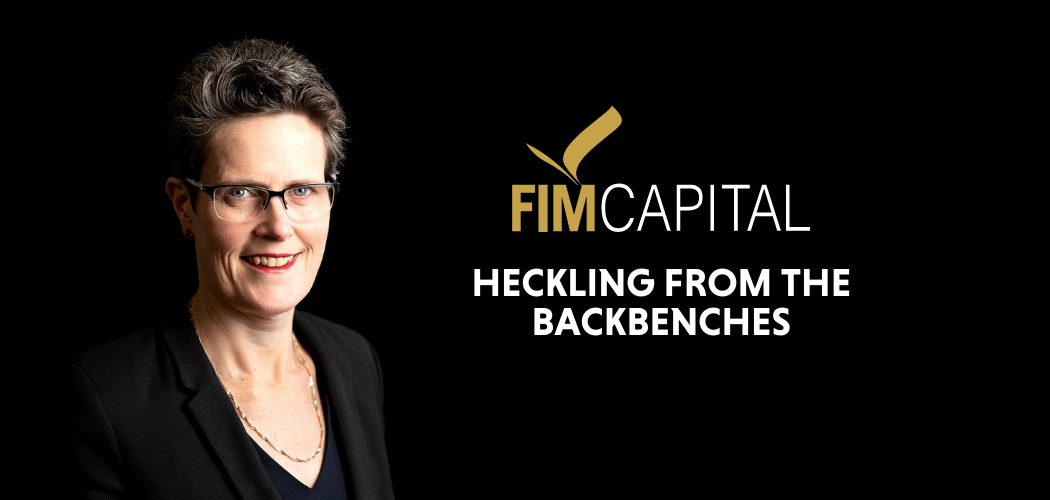The Call for Stablecoin & Cryptoasset Regulation
28 November 2023

Written by Stephen Billinghurst, Director Oben Regulatory (IOM) Ltd
At the beginning of this month, there was a raft of papers issued by United Kingdom establishments regarding the creation of a regulatory regime broadly for cryptoassets but more specifically for stablecoins.
The Bank of England (‘BoE’), the Financial Conduct Authority (‘FCA’) and HM Treasury issued discussion papers on the possible future regulatory framework. In July 2022 the International Organisation of Securities Commissions (‘IOSCO’) published guidance on the application of financial market infrastructure principles for stablecoins and in October 2022 the Financial Stability Board (‘FSB’) proposed a framework for the international regulation of cryptoasset activities. In December last year the Basel Committee on Banking Supervision (‘BCBS’) issued a prudential standard for the treatment of banks’ cryptoasset exposures and in November 2023 the Bank for International Settlement (‘BIS’) also issued a paper (“Will the real stablecoins please stand up?”) on the topic of stablecoins and the state of the current marketplace.
Given the UK’s position as an international finance centre and the issue of the discussion papers, interesting that what’s missing from the BIS paper is the description and identification of any GBP backed stablecoin. The significant majority of the recognised fiat backed stablecoins are US dollar, with some Euro, Yen and Indonesian Rupiah.
WHERE ARE WE NOW?
Currently, the Isle of Man holds a unique position as the jurisdiction that is home to a GBP denominated stablecoin, Poundtoken. The Poundtoken meets the statutory definition of e-money and so the issuer of Poundtoken is licensed under the Financial Services Act 2008 to undertake payment services & issue e-money.
The two overriding principles of the Bank of England’s (‘BoE’) proposal are:
- The regulation of the payment chains used by stablecoins critical to their functioning, and
- The requirement for stablecoins that, when acting like money, should meet the standards equivalent to those expected of commercial bank issued fiat money including stability of value, robustness of legal claim and ability to redeem at par.
WHERE COULD WE BE HEADING?
The proposed regulatory outcome in the UK is one of a dual regime, to be governed in part by the The Bank of England (BoE) – in respect of the prudential purposes – and by the Financial Conduct Authority (FCA) – in respect of conduct. Additionally, the proposal sets out the expected requirements of the issuer with regard the ‘backing assets’ needing to be of sufficient quantity to back all issued coins, to be stable in value and sufficiently liquid to support prompt redemption.
The FCA raises in its discussion paper consideration of a new framework for coin issuers to secure the stablecoins against government treasury debt of less than one year maturity and short-term cash deposits, but no use of Money Market Funds. The manner in which the backing assets (client assets) are held is proposed to be segregated from the issuer’s, such as in a trust for the benefit of customers and that the backing assets be held by a regulated custodian or credit institution. If an issuer plans more than one stablecoin, the proposal is for each coin’s backing assets to be appropriately segregated.
The BoE paper raises the matter of the capital requirements for a stablecoin issuer and considers using the existing standards under the financial market infrastructure principles as a starting point for considering what the figures could be.
Proposals that address the management of the issuer’s ‘balance sheet’, though the suggestions around the quality of backed assets and how they are held are very important developmental elements of the regulatory framework. Certainly this element of stablecoin regulation is commercially significant for all issuers, both in terms of the return (outside of fees) the issuer can earn and in terms, for any regulator, of the quality of an issuer and the associated consumer protection.
The proposals for stablecoin regulation are part of a much wider regulatory consultation programme for a cryptoasset framework that encapsulates custody, exchange activities, cryptoasset lending, asset issuance and cryptoasset trading. What is certain is that there is much more yet to come from the UK and international regulatory authorities in this space, notwithstanding the EU’s recent Markets in Cryptoassets Regulations. The Isle of Man must maintain a close watching brief on what is developing ‘locally’ and internationally to ensure our reputation as a nimble jurisdiction is retained and that there is little opportunity for regulatory arbitrage which could be damaging.
I am sure that the Isle of Man Financial Services Authority will follow the UK’s developments and ensure that whatever is drafted remains within the overarching international principles and frameworks such as those issued by IOSCO, the FSB and the BIS. To do so will, I hope, continue to place the island at the cutting edge of financial services provision, for wholesale and retail market participants and continue to support the island’s position within the offshore international financial services sector. There must be the availability of a fully interconnected framework that addresses all aspects of cryptoassets, including stablecoins.





